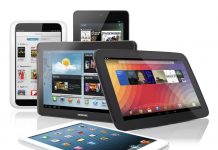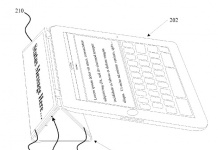 Do iPads belong in the classroom? A pair of articles on TechCrunch raise and address the question.
Do iPads belong in the classroom? A pair of articles on TechCrunch raise and address the question.
Matt Burns argues that tablets should mostly be kept out of the classroom, fearing that they could turn into yet another crutch for our youth, just as pocket calculators mean kids no longer need to know how to actually do math.
Kids are now taught to pass tests. Knowledge is externalized, stored on some Wikipedia server or graphing calculator until needed. Learning is still prevalent in schools, but the storage of facts and thoughts is not. Digital textbooks will only further this problem. Just click on a word to get its definition, says Apple.
He also points out the potential for distraction, that kids could use the devices to look at things that interest them rather than what they’re supposed to be studying.
Burns isn’t entirely opposed to iPads in schools, as he recognizes they do have the potential to be a powerful tool. However, he is concerned that the disadvantages may outweigh the benefits.
On the other hand, Greg Kumparak thinks that iPads definitely have a place in the classroom, as part of a more balanced approach to education, with kids learning how to solve problems both with and without the aid of technology.
I honestly believe it’s entirely possible — nay, crucial — to teach a kid to live both with and without technology. Teach and test them on how to do it the hard way (and more importantly, to understand the underlying concepts)… then drive it in with technology. If you instill a sense of pride in doing things with your very own brain, perhaps all that junk won’t fly out the window as soon as the diploma is signed. It’s all about balance.
He also points out that kids are going to find ways to distract themselves no matter what educational materials they are given, and that teachers should already be watching out for that sort of thing even with printed books.
Both of these articles raise important points, and it’s clear that adding technology to a curriculum is more than just a matter of plopping iPads into classrooms without supervision or adjustment. And it seems likely that any advance in technology will generate the same sort of discussion when it comes time to consider its use in education. In the end, only time will tell how well adding this particular sort of technology to the classroom will work out.

































What about the issues of a single company providing both the sole technology platform and the distribution channel for knowledge in the classroom? And I’m not just talking about the incredibly restrictive EULA.
Despite the dreams of skinflint legislators and taxpayers, we will always need good, conscientious teachers. Technology only amplifies the objectives and tactics of teachers. Given the economics of paper textbooks and the sums that school systems pay for them, I think that it is entirely feasible to replace them with iPads loaded up with iBooks textbooks.
A deep understanding of the underlying non digital skills to teaching is the first step a teacher should have before embarking in the digital revolution. Interactive whiteboards and IT enhance the skills of quality teaching and are used by poor teachers to entertain kids.
Chris W worries (unnecessarily) about Apple as a single vendor. The content can be produced by any number of vendors such as Pearson, McGraw-Hill and so on. In addition to that, there is the distinct possibility that many great and interactive eTextbooks will be free and offered by teachers themselves as well as other subject matter experts. Still, nervous nellies can opt to use other, less capable eTextbook forms and/or wait for others to rise to the bar that Apple has set. The end result of whatever transpires is that students will be better off and that’s a good thing.
Disclosure: my company sells tablet computers for education.
Tablets are quickly becoming an important part of the way we use computers for work and play, so students need to be able to use them effectively, but I think they can enhance the classroom beyond just ICT training.
Our LearnPad solution is being used by hundreds of UK school children in a huge variety of ways. The touch screen interface is engaging and intuitive, especially for young or remedial learners. The lock down UI eliminates distractions and allows teachers to change themes between classes or for different study groups by simply showing a QR code to the device’s camera.
I’m not anti-iPad (I’m actually typing this on an iPad), but they are difficult to use and manage in the classroom.